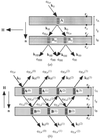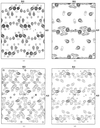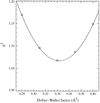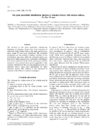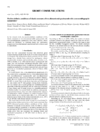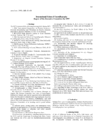issue contents
May 1999 issue

Cover illustration: One quadrant of each of four fibre diffraction patterns from disordered polynucleotide fibres. The patterns were calculated for fibres with disorder as follows. Upper left: crystalline (no disorder); upper right: noncrystalline (completely disordered); lower left: discrete rotational disorder and correlated lattice disorder; lower right: random screw disorder. See Stroud & Millane [Acta Cryst. (1996), A52, 812-829].
research papers
short communications
international union of crystallography



 journal menu
journal menu











